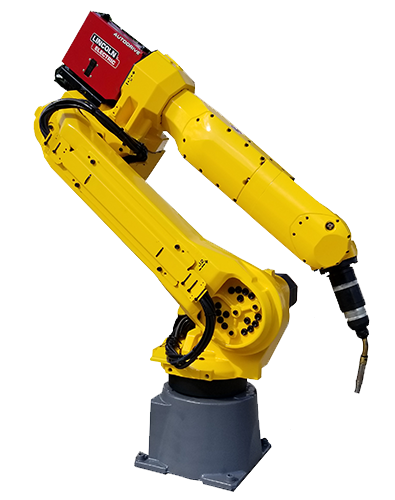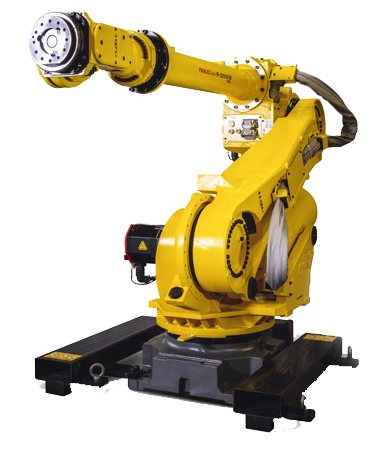Welding has always been one of the most common applications for industrial robots. The repetitiveness and dangers of welding have made it popular for robotic automation in the past. Now welding robots like the FANUC Arcmate 120ic are becoming vital for supporting American manufacturing as there are fewer and fewer experienced welders. The welding industry is in the midst of a significant worker shortage that is only expected to worsen. By 2024 the American Welding Society is predicting a shortage of 400,000 welders. Fortunately, there is no shortage of welding industrial robot arms. Both new and used robot manipulators are filling in the skills gap by automating welding applications. Not only is the Yaskawa MA1440 and other six axis robots combating the welder shortage, but they are providing a number of advantages over manual welding including:
- • Faster Cycle Times - Robotic manipulators are simply faster than human welders, decreasing the amount of time it takes to complete a weld. Factory robots operate at fast speeds without breaks or delays. They can also operate around the clock. This allows more welds to be completed in less time than manual welding processes. With the faster cycle times of robotic welding higher productivity rates can be achieved.
- • Consistent and Better Quality Welds - Manual welding can be very error prone as even the most experienced welder is not immune from making mistakes. Welders can lose concentration and tire leading to errors and poor or inconsistent weld quality. With the ABB 2600-12 and other manufacturing robot arms, application parameters are defined and followed exactly, thereby improving weld quality. With robotic welding all welds are consistent and high quality.
- • Reduction in Rework - With the higher and more consistent quality of robotic arc welding the likelihood of parts needing rework is significantly reduced. When welds are done correctly the first time, there is no need to redo the weld due to errors or poor quality. Less rework also helps to increase productivity.
- • Conserves Raw Materials - With fewer errors and rework of robotic welding there is less material waste. Fewer parts are scrapped due to errors as robots are programmed to execute welding applications according to specific parameters. The efficiency of industrial robotic arms also reduces the amount of welding consumables used. With robotic welding companies can accurately plan and budget their raw materials.
- • Reduction in Costs - Robotic welding can significantly lower production costs. Due to the high skillset of welding, manual welding can be quite expensive with high welder salaries. Automating with robots reduces labor costs and will ultimately be less expensive in the long term. Robots use fewer consumables and raw materials, lowering material costs. Utilities such as electricity can be reduced as articulated robots do not require light or heating/cooling to be able to operate. Fewer costs combined with the higher productivity of welding robots allows companies to expand their profit potential.
- • Safer Work Environment - Automating welding with the FANUC Arcmate 100ic and other robots creates a safer work environment. The fumes, high heat, sparks, UV light, and spatter of welding are dangerous to the health and safety of workers. It is better to remove workers from these safety risks by automating with welding robots. Workplace inquiries and the costs associated with them will be significantly reduced.

